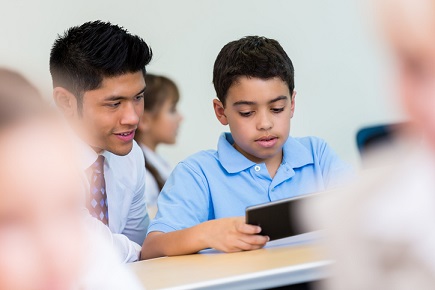
When computing devices first began appearing in the classroom, the accepted view was “the more the better”. Both teachers and parents believed equipping children with the latest and greatest notebook or tablet would boost their performance and lead to higher grades.
Some parents would even choose a school based on the technology in use. Many thought that, the more dollars that were being invested in classroom technology, the better the learning experience would be for their children.
Techno distractions
While there’s no doubt that having computing devices in the classroom can greatly aid the teaching process, they can also become an unwanted distraction. Maintaining and managing multiple devices can be a time-intensive chore for teachers and take them away from their core role.
For students, having devices that are improperly configured or lacking required software is also very frustrating. Many will be tempted to either try to fix them themselves, or ignore them altogether.
Schools have traditionally had very little in the way of centralised IT support services. When multiple devices in different form factors and using different operating systems are spread across the school, effective support and management can become a daily challenge.
Further distractions also stem from the need for security and oversight. One teacher cannot hope to effectively monitor what every student is accessing online or ensure that robust security measures are in place.
The change role of tech
During the past couple of years, there has been a change in strategy within schools when it comes to matching technology with actual teaching needs and desired outcomes.
Many are standardising the types of devices they allow into the classroom. Some are following a centralised procurement model a device is chosen and parents simply pay for it. Others select an ecosystem – be it Microsoft, Apple or Google – and then allow students and parents to choose a device from the range on offer from that vendor.
When it comes to technology, what’s being taught is also changing. Children are increasingly technology literate before they come into the classroom and so, rather than focusing on the mechanics of computing, it’s more a case of teaching about creating content and interacting with others.
Technology is also increasingly being used as a collaborative tool. Students are sharing created content with their peers and interacting as a part of their daily learning process. Classroom education is therefore shifting from being fully teacher directed to being student centred.
Achieving student-centred education
It’s clear that the way technology can support a student-centred classroom is changing. As well as being used to find and make sense of information, students are relying on their devices to create content and share their ideas.
To achieve an effective student-centred outcome using technology, teachers and parents should:
- Review: Think carefully about the technology being used and whether it is the best possible fit for the school’s curriculum. Where possible, standardise on a smaller number of devices to remove complexity.
- Manage: Consider investing in a technology management platform that can streamline and automate device management.
- Monitor: Constantly monitor progress to ensure devices are meeting the daily needs of students. As these needs change over time, so too should the devices.
- Study: Keep abreast of technology trends. The pace of evolution in technology continues to gain pace and what’s available for classroom use is constantly changing.
The role of technology in the classroom will continue to evolve and support a student-centred experience. By taking the time to understand the options and selecting the most appropriate tools, teachers and parents can be sure they are setting children up for a future of success.
Francesco Garbellini is the Education Account Executive at JAMF, a US technology management solution company.


